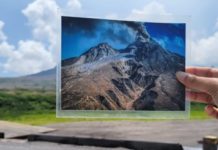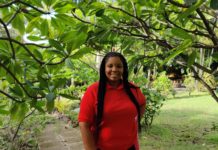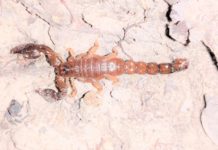W I L D D O M I N I Q U E
IUCN SOS 2020A-161
REPORT ON DOMINICA’S MOUNTAIN CHICKEN FROG TEAM’S EXCHANGE TRIP TO MONTSERRAT
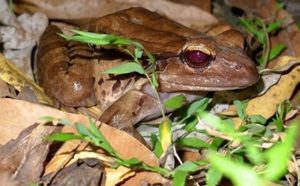
CONSERVING DOMINICA’S MOUNTAIN CHICKEN AS A FLAGSHIP FOR BIODIVERSITY CONSERVATION
PREPARED AND PRESENTED BY
JEANELLE BRISBANE, WILDLIFE ECOLOGIST
Overview
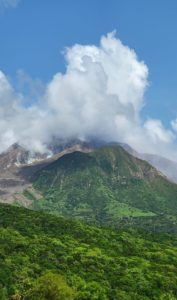
From 16-24th May 2022, Ira Pierre and Jeanelle Brisbane of the Dominica Mountain Chicken Frog Project team visited the island of Montserrat. The purpose of this visit was to meet Montserrat’s Mountain Chicken Recovery Programme team, explore and assist with their semi-wild captive facility and live food facility, participate in field surveys, and network with their island’s National Trust and Department of Environment.
Originally, this trip catered for 3-4 team members from Dominica. However, due to travel protocols and COVID-19 status, only 2 team members were able to travel. Nonetheless, this trip provided a lot of insight to the Dominican team on the management of a semi-wild captivity programme and strengthened inter-island relationships.
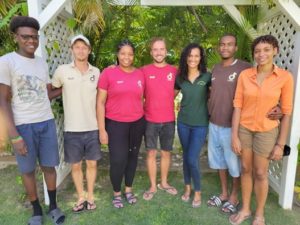

Semi-wild captive breeding enclosure
In an effort to re-establish a Mountain Chicken population on Montserrat (no wild frogs were noted since 2017), a semi-wild captive breeding program was created. Managed by the Durrell Wildlife Conservation Trust and Montserrat National Trust in partnership with Montserrat’s Department of Environment, over 20 frogs were re-introduced to Montserrat from ex-situ breeding programs into a fenced off space tailored to the frog’s needs. This includes two forested enclosures (separated by a wire mesh), hot and cold water pools (for chytrid management), artificial nest boxes, predator control, a supplementary feeding schedule, and hiding places.
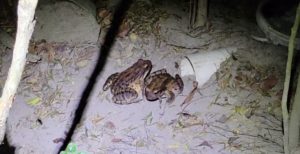
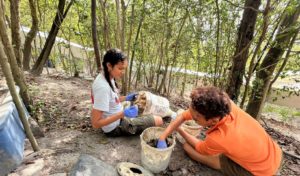
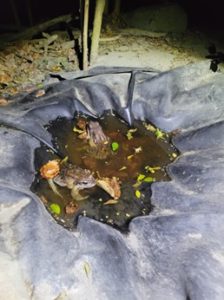
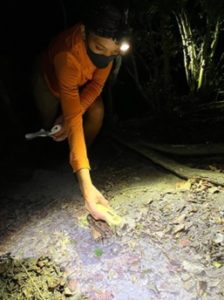
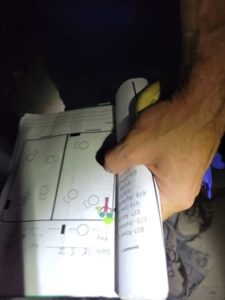
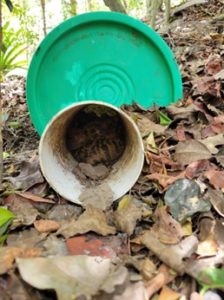
The Insect Breeding Facility
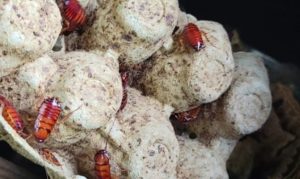
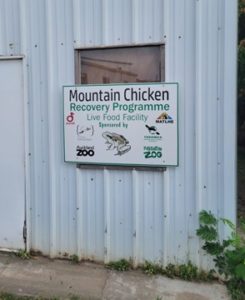
The Live Food Facility forms a crucial part of the Mountain Chicken Recovery Programme. Inside, there are 2 species of crickets and 3 species of cockroaches being bred as supplementary food for the Mountain Chicken Frogs. Three times a week, the team tends to the insects: feeding them, preparing nest boxes, monitoring their health, creating new insect colonies, cleaning their boxes, maintaining the cleanliness of the facility, and monitoring for the presence of predators within the facility while preparing the bails to feed the frogs later that night.
As Dominica no longer has a live food facility due to the closure of the captive breeding programme following Hurricane Maria, Ira and Jeanelle found it quite nostalgic and refreshing to once again be inside such a facility.

Field Surveys
Each year, the Department of Environment, alongside the Montserrat team, conducts field surveys across Montserrat in search of Mountain Chicken Frogs. These transects follow the historical survey routes where Mountain Chicken Frogs were observed on the island prior to 2017.
Ira and Jeanelle managed to join in on 2 of these surveys: Fairy Walk and Killiecrankie Springs. Though no Mountain Chicken Frogs were seen, a number of Montserrat’ s wildlife were observed along the way. It was also great for the Dominican team to see once more a forest system that has been unaffected by a hurricane for a few decades (i.e., a closed canopy and clear understory).
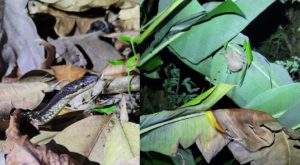
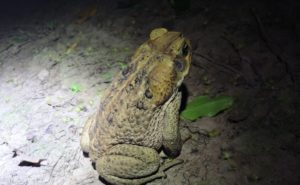
Surveying for Iguana melanoderma
The Dominican team was given the opportunity to participate in a survey for iguanas on Montserrat. This included a count survey along a transect as well as processing road mortalities. Montserrat’s iguana is currently undergoing genetic review to be potentially classed as Iguana melanoderma – a species that will be endemic to the island of Montserrat and Saba.
It was interesting to note that, given the colouration of this iguana, the survey techniques we use in Dominica would not be effective in Montserrat. Also, the difference in the behaviour of Iguana melanoderma (Montserrat) and Iguana delicatissima (Dominica) is remarkable given that Dominica is only two islands away. Iguana melanoderma, despite its colour, can be seen basking all day and is more aggressive, unlike Iguana delicatissima in Dominica.
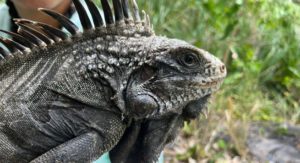


Exploring Montserrat
While off-duty in Montserrat, Ira and Jeanelle took the opportunity to explore the Caribbean’s Emerald Isle. This included visiting the Montserrat Volcano Observatory and touring the abandoned capital of Plymouth. Both were in awe to see the impact of the Soufriere Hills’ recent volcanic eruptions on a once-thriving town likening it to “the devastation of a hurricane without the possibility of rebuilding”. It was also fascinating to observe how the island’s fauna and flora reclaim this previously barren space. The highlight of it all, though, was seeing the new landmasses that resulted, which gave a better understanding of how our islands were formed over time.
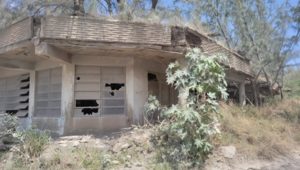

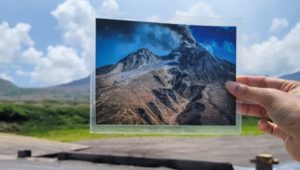
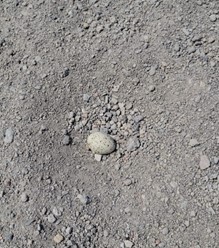
Thank you!
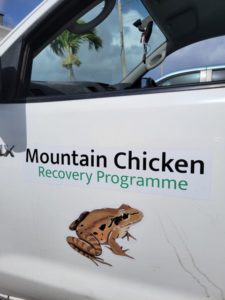 The Dominica Mountain Chicken Frog team would like to express its deepest gratitude to the Montserrat Mountain Chicken Recovery team (both Durrell and the National Trust) and the Montserrat Department of Environment for their incredible hospitality. Their dedication to the conservation of our islands’ regionally endemic frog can be clearly seen through the hard work that goes into their recovery programme. We are excited to build upon this inter-sland collaboration and hope that this is one of many exchanges to come.
The Dominica Mountain Chicken Frog team would like to express its deepest gratitude to the Montserrat Mountain Chicken Recovery team (both Durrell and the National Trust) and the Montserrat Department of Environment for their incredible hospitality. Their dedication to the conservation of our islands’ regionally endemic frog can be clearly seen through the hard work that goes into their recovery programme. We are excited to build upon this inter-sland collaboration and hope that this is one of many exchanges to come.
Thank you to the IUCN SOS for making this exchange trip possible and to ZSL for their continued support of the conservation of the Mountain Chicken Frog.


